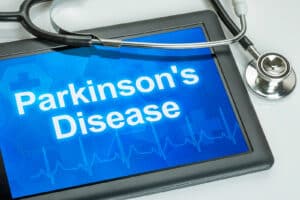
Parkinson’s disease is a progressive neurological disorder that affects movement, balance, and daily function. It impacts millions of people worldwide, with seniors being the most at risk. While there is no known cure, awareness, early intervention, and senior home care services can help individuals manage symptoms and maintain independence.
Life’s At Home Care is dedicated to supporting seniors as they navigate life with Parkinson’s, offering personalized assistance to promote safety and well-being at home.
Parkinson’s Disease by the Numbers
Parkinson’s disease affects approximately 10 million people worldwide, with nearly one million in the United States alone. It is the second most common neurodegenerative disease, following Alzheimer’s. Each year, about 90,000 Americans are newly diagnosed, a number that has been increasing over time.
Age remains the biggest risk factor, with most cases developing after age 60. However, 4% of cases occur before age 50, known as early-onset Parkinson’s. The condition is more common in men than in women, with men being 1.5 times more likely to develop the disease.
April Is Parkinson’s Disease Awareness Month
April is designated as Parkinson’s Disease Awareness Month, a time to focus on education, research, and support for those affected. The goal is to increase awareness about early symptoms, encourage funding for medical advancements, and highlight the importance of resources for individuals and their families, like senior home care services.
Raising awareness can lead to earlier diagnoses, improved treatment options, and better community support. Many organizations use this time to advocate for research efforts and share new developments in Parkinson’s care.
Understanding the Risk Factors
While the exact cause of Parkinson’s remains unknown, researchers have identified several risk factors that may contribute to its development:
1. Age and Genetic Factors
Aging is the most significant risk factor, with the likelihood of developing Parkinson’s increasing with each passing decade. Some genetic mutations have also been linked to the disease, though they account for a small percentage of cases.
2. Environmental Exposures
Long-term exposure to pesticides, herbicides, and industrial chemicals has been associated with a higher risk of Parkinson’s. Veterans who were exposed to Agent Orange or certain solvents may also have an increased likelihood of developing the disease.
3. Head Injuries
Repeated head trauma, such as concussions from sports or accidents, has been linked to a greater chance of developing Parkinson’s later in life. This connection is still being studied, but evidence suggests that brain injuries may accelerate neurological decline.
4. Lifestyle and Diet
Some research suggests that a lack of physical activity, chronic stress, and diets high in processed foods could contribute to neurodegenerative conditions. On the other hand, a Mediterranean-style diet, rich in fruits, vegetables, and healthy fats, may lower the risk.
How Senior Home Care Helps Seniors with Parkinson’s
Managing Parkinson’s at home presents unique challenges, especially as symptoms progress. Senior home care provides personalized support to help seniors maintain independence while staying safe and comfortable in their own homes.
1. Assistance with Mobility and Fall Prevention
Balance issues and stiffness make walking more difficult and increase the risk of falls. Caregivers assist with mobility, ensuring seniors can move safely around their home and reducing potential hazards.
2. Help with Daily Activities
Simple tasks such as dressing, bathing, and eating can become frustrating for someone with Parkinson’s. Senior home care providers offer gentle support while encouraging seniors to stay as independent as possible.
3. Medication Reminders and Health Monitoring
Many individuals with Parkinson’s take multiple medications to manage symptoms. Missing a dose or taking the wrong amount can lead to increased difficulties. Senior home care professionals provide reminders and monitor for any changes in health that may require medical attention.
4. Emotional and Social Support
Parkinson’s can lead to isolation, as mobility issues and speech changes make socializing harder. Companionship plays a key role in mental well-being, and senior home care providers provide meaningful conversation and engagement to reduce loneliness.
5. Encouragement for Exercise and Therapy
Exercise is beneficial in slowing the progression of Parkinson’s symptoms. Caregivers encourage participation in physical therapy exercises, stretching routines, or light movement to help maintain flexibility and strength.
Life’s At Home Care: Personalized Care for Seniors with Parkinson’s
Life’s At Home Care understands the challenges of Parkinson’s disease and is committed to helping seniors live comfortably at home. With senior home care, individuals receive the daily support they need while maintaining their independence. Personalized care ensures safety, comfort, and dignity at every stage of the disease.
If you or an aging loved one is considering Senior Home Care in Suffolk, VA, please contact the caring staff at Life’s At Home Care today! Chesapeake Office (757) 337-5160 | Richmond Office (804) 396-6000
Life’s at Home Care is a top provider of home care services in Suffolk, Hampton, Virginia Beach, Portsmouth, Newport News, Norfolk, Chesapeake, Chesterfield, Hanover, Henrico, and the Richmond, Virginia area.
- Health & Wellness Education Event at First Colonial Inn - May 29, 2025
- Staying Active: A Key Part of Companion Care at Home - May 23, 2025
- Spring Into Wellness: Life’s At Home Care Visits Chesapeake Health and Rehab - May 13, 2025


